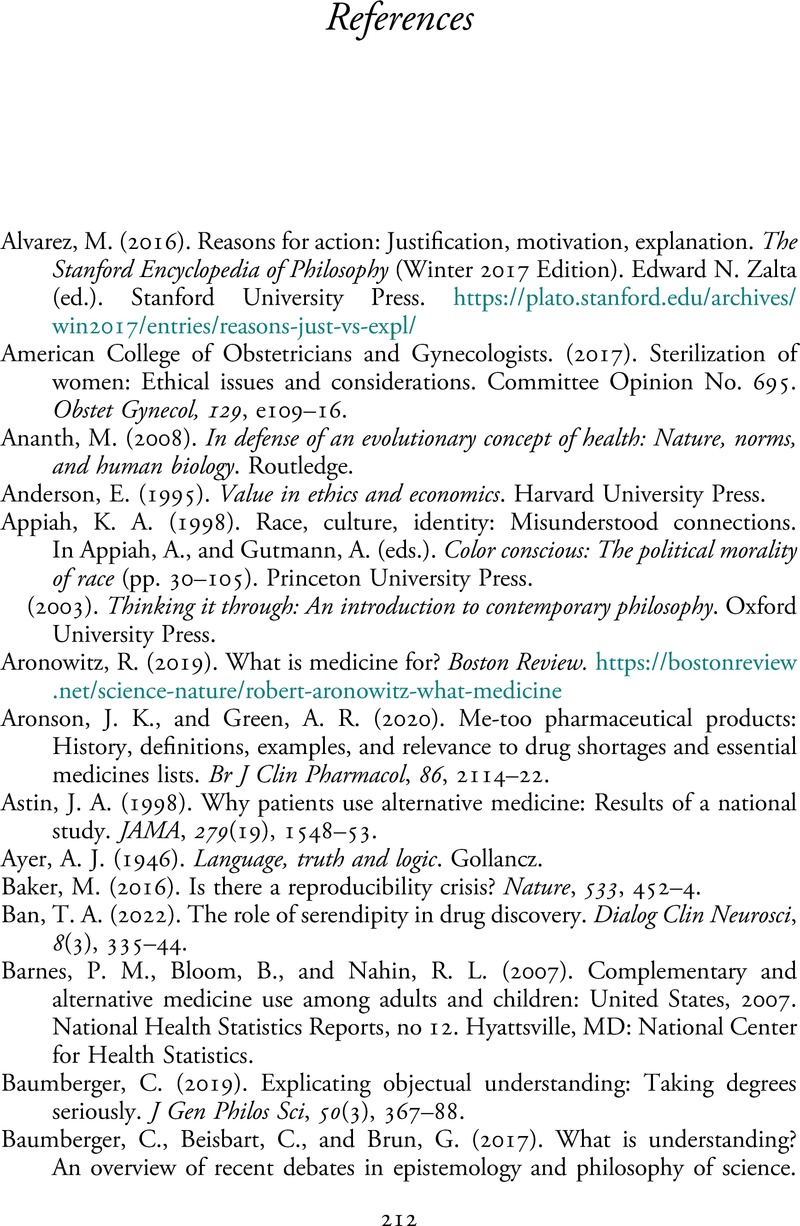Book contents
- Science, Medicine, and the Aims of Inquiry
- Science, Medicine, and the Aims of Inquiry
- Copyright page
- Contents
- Preface and Acknowledgments
- Introduction
- Chapter 1 Challenges to Medicine at the End of Its “Golden Age”
- Chapter 2 Toward a Normative Philosophy of Medicine
- Chapter 3 Science and Medicine
- Chapter 4 Inquiry in Medical Science
- Chapter 5 Understanding in Medicine
- Chapter 6 The Aim of Medicine I
- Chapter 7 The Aim of Medicine II
- Chapter 8 Rethinking the Challenges
- Conclusion
- References
- Index
- References
References
Published online by Cambridge University Press: 16 May 2024
- Science, Medicine, and the Aims of Inquiry
- Science, Medicine, and the Aims of Inquiry
- Copyright page
- Contents
- Preface and Acknowledgments
- Introduction
- Chapter 1 Challenges to Medicine at the End of Its “Golden Age”
- Chapter 2 Toward a Normative Philosophy of Medicine
- Chapter 3 Science and Medicine
- Chapter 4 Inquiry in Medical Science
- Chapter 5 Understanding in Medicine
- Chapter 6 The Aim of Medicine I
- Chapter 7 The Aim of Medicine II
- Chapter 8 Rethinking the Challenges
- Conclusion
- References
- Index
- References
Summary

- Type
- Chapter
- Information
- Science, Medicine, and the Aims of InquiryA Philosophical Analysis, pp. 212 - 229Publisher: Cambridge University PressPrint publication year: 2024

